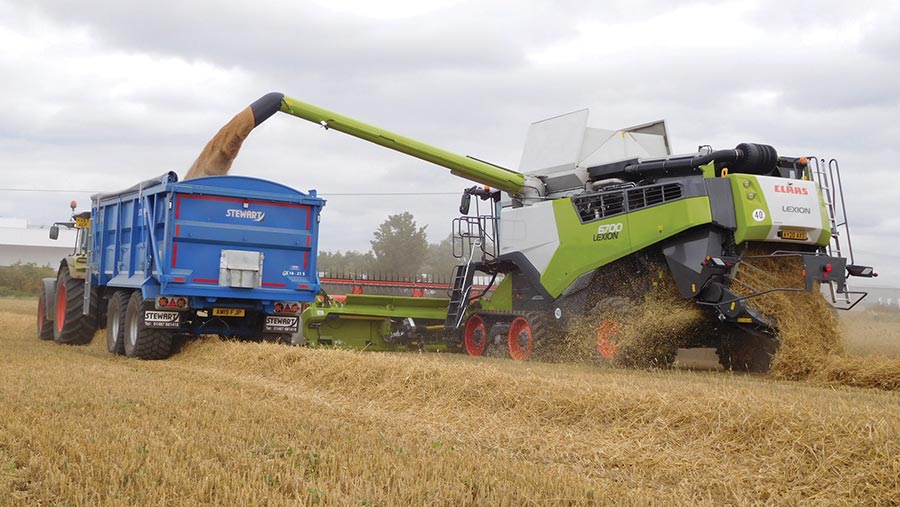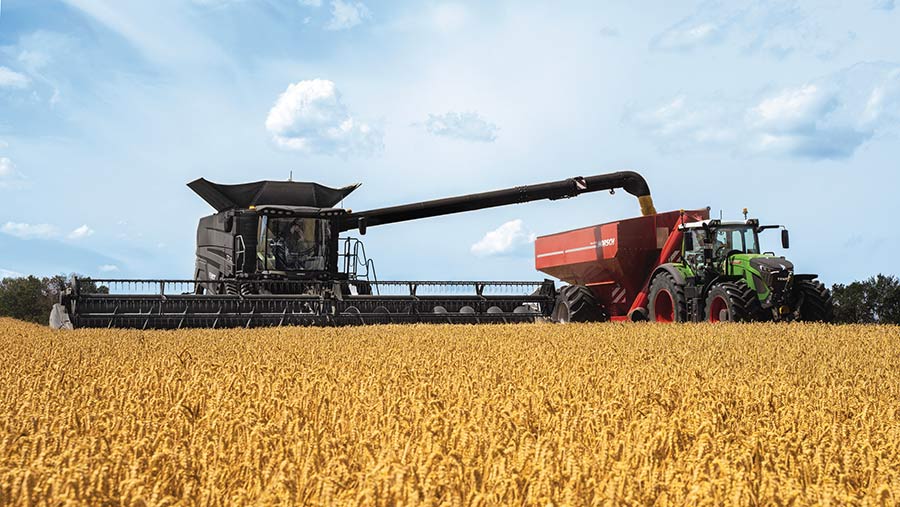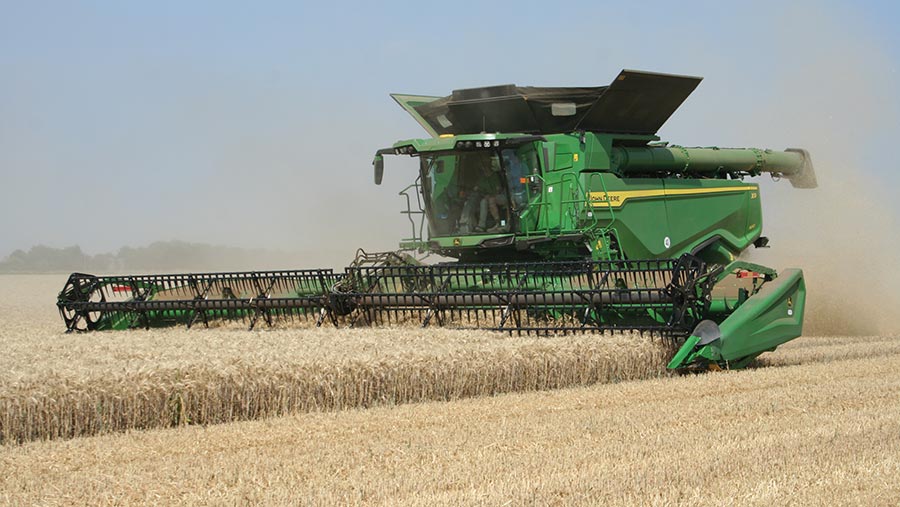Ultimate guide to buying a combine 2021
 Claas Lexion 6700 is available on wheels or tracks with a choice of 30kph or 40kph travel speeds © Claas
Claas Lexion 6700 is available on wheels or tracks with a choice of 30kph or 40kph travel speeds © Claas Increased capacity potential with more sophisticated powertrains promising lower running costs are common themes among new combine harvesters listed in this year’s Ultimate Guide for harvest 2021.
At Claas, the straw walker Lexion 600-series has been replaced by the 5000- and 6000-series combines, which follow in the footsteps of their rotary separation counterparts in adopting the Synflow threshing assembly.
Download the Ultimate Guide to combines (PDF)
Bigger areas
This comprises a new threshing drum positioned behind the APS initial separation and crop acceleration cylinder, which at 755cm diameter is 26% larger than the previous version and increases the threshing area to 1.55sq m.
A new 600mm grain separation tine drum is located behind it for the first time, after which a beater with its own separation grate keeps the crop moving on to shorter straw walkers that no longer have a tine agitation mechanism above them.
See also: Retrofit yield monitor offers crop data on old combines
The net result is an increase in total separation area and smoother path for the crop, designed to help preserve straw condition and quality for those who want to bale rather than chop it.
For easier switching from one crop to another, 40% of the main concave and grates beneath the APS and new separation drum can be removed through one side of the housings.
The five- and six-walker machines also get the Jet Stream turbine fan cleaning system set-up.
Claas Dynamic Power engine management adjusts power and torque output according to load at a modest 1,900rpm speed to save fuel in the field and during road travel, and there is a more efficient drive system for the internals and header designed to take up drive more smoothly.
Lower-spec Farm-Line models have been dropped from the Deutz-Fahr C7000 straw walker combine line-up – although their specification can be realised through delete options on other models.
Joystick Ideal
Fendt has added the higher-capacity Ideal 10T to its range, with an extra two concave sections on the dual Helix threshing/separation rotors exploiting a 22% increase in maximum output to 790hp.
The extra separation area amounts to 4.54sq m, compared with the Ideal 9’s 3.58sq m, while the upper and lower sieve area remains at 5.40sq m for both models, compared with the 4.90sq m offered by the Ideal 8.

The Fendt Ideal 10T introduction brings more performance and unique joystick steering for all Ideal models with TrakRide tracked running gear © Fendt
Joystick-operated IdealDrive steering is introduced for all Fendt Ideal combines running on the TrakRide undercarriage.
Assigning all steering control to the joystick mounted on the left-hand seat armrest eliminates the traditional steering wheel to leave a clear view across the cutting table, interrupted only by the cab pillars.
Ditched from the John Deere range are the lowliest models in the former line-up, comprising the Sampo Rosenlew-sourced W300- and W400-series and Deere’s own W500 and W600 machines.
That leaves the comprehensive T500- and T600-series as the sole straw walker models in the range, while at the top of the performance league, the new X9-series twin-rotor combines become the new flagships.
New cutting tables, a wider crop elevator and rotors that are longer than the single larger-diameter units used in the S-series machines contribute to increased performance potential that can hit 100t/hour.

Smarter packaging and power-efficiency solutions help John Deere X9 combines achieve high outputs © John Deere
And that does not come with a big hike in power output, thanks to improved power efficiency from the driveline, straw chopper and ground drive, together with a new engine developing high torque at low revs, while promising up to 20% lower total fluid consumption.
At the same time, more effective packaging and productive use of available space results in the two X9 models being only a little larger than their S-series siblings.
The dual 600mm-diameter rotor set-up delivers a 45% increase in threshing area, according to Deere’s calculations, and an 80% increase in separation area; and there is said to be 85% more air passing through the X9’s sieves.
Among the power-saving measures are dimples in the chopping blades designed to improve their aerodynamic efficiency and reduce the amount of air forced around the rotor housing.
Hybrid NH
New Holland’s contribution to the new combine introductions is the sole “CH” machine.
This mid-range model – the CH 7.70 – is based on the CX 6, but has rotary separation instead of straw walkers, making it New Holland’s first hybrid combine, or Crossover Harvesting in NH language.
Aft of the 600mm threshing cylinder is a 395mm paddle beater that begins the separation process while feeding the two 542mm-diameter rotors, each 3.45m long for a separation area calculated at 2.90sq m, without taking into account the spiral path of the straw mat.
Performance is said to be 25% up on a walker combine in this segment, with a 15% increase in cleaning capacity contributing to this potential.
While the Smartsieve dynamic cleaning system management compensates for slopes up to 25%, the Laterale version of the CH7.70 adds 18% sidehill compensation for the whole combine.

